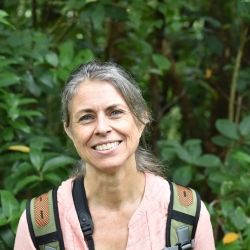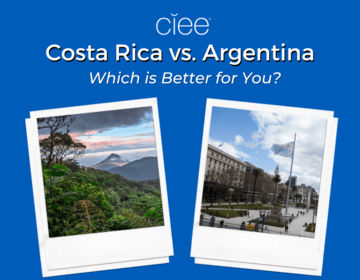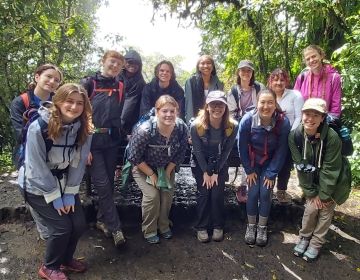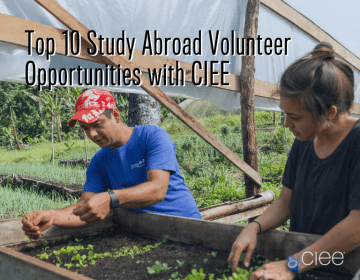Fall 2014 Second Field Trip: Food and Forests
The second field trip for Sustainability and the Environment centered on the themes "Food and Forests". We travelled by boat, bus, and boot to the Reserva Indio Maíz and El Castillo, Nicaragua, then to the Sarapiquí region of northern Costa Rica, and finally south to the BriBri communities of the Talamanca mountains, on the border of Costa Rica and Panama. Read on to see and hear about our excellent adventures.
The fun started on the Río San Juan de Nicaragua, around sunset, when we finally arrived in the tiny river town of El Castillo...
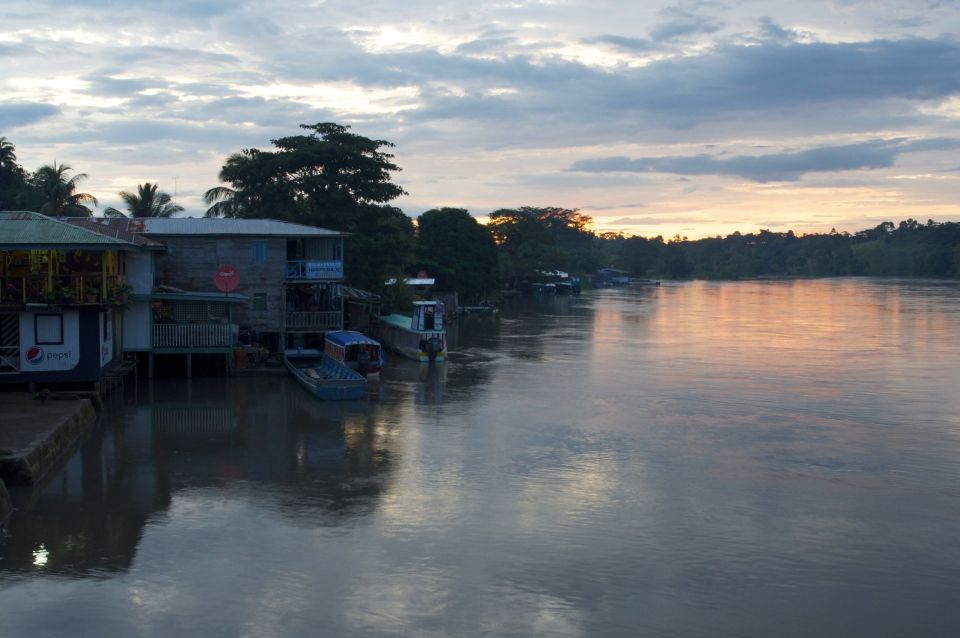
FORESTS
We jump-started our exploration of forest protection and management at the Indio Maíz Reserve, part of one the largest expanses of protected forests of Central America.

We boated down river to the Reserve, spotting crocs along the way.
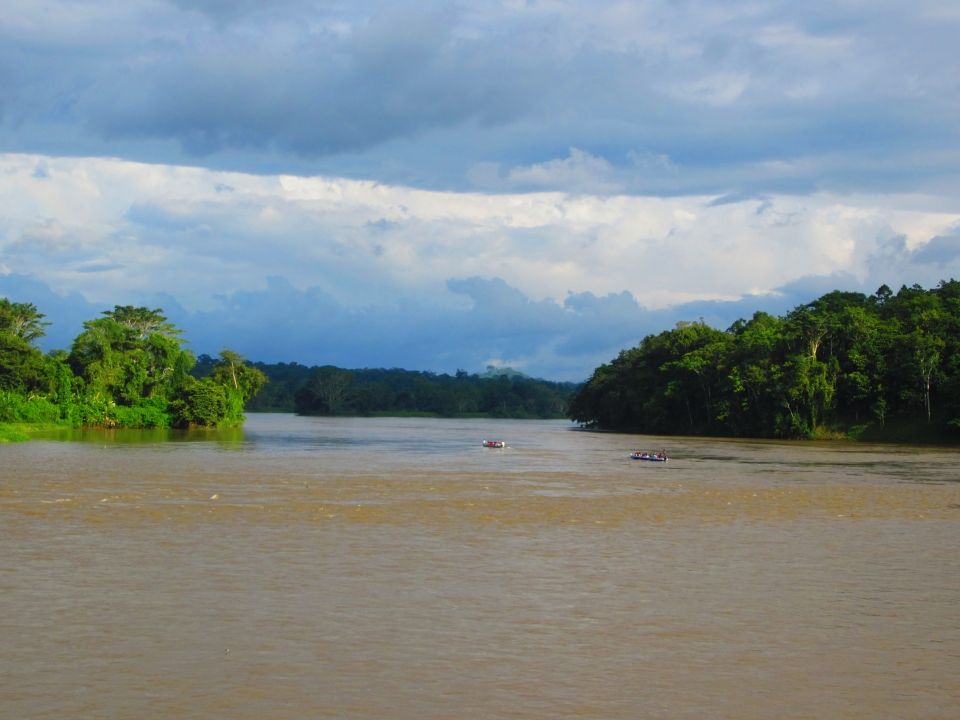
Here we are, about to enter the quintessential tropical rainforest, with ancient and magnificent trees that harbor endless surprises.
In the arms of the almendro: Emily Valencia, Rachel Weber, Benjamin Russin (PlantMan), Maxwell Fleming, and Abby Lutmer.
Admiring the almendro, food and home for Great Green Macaws...
Spider monkey mom totes baby on back (and maybe one in the oven?).
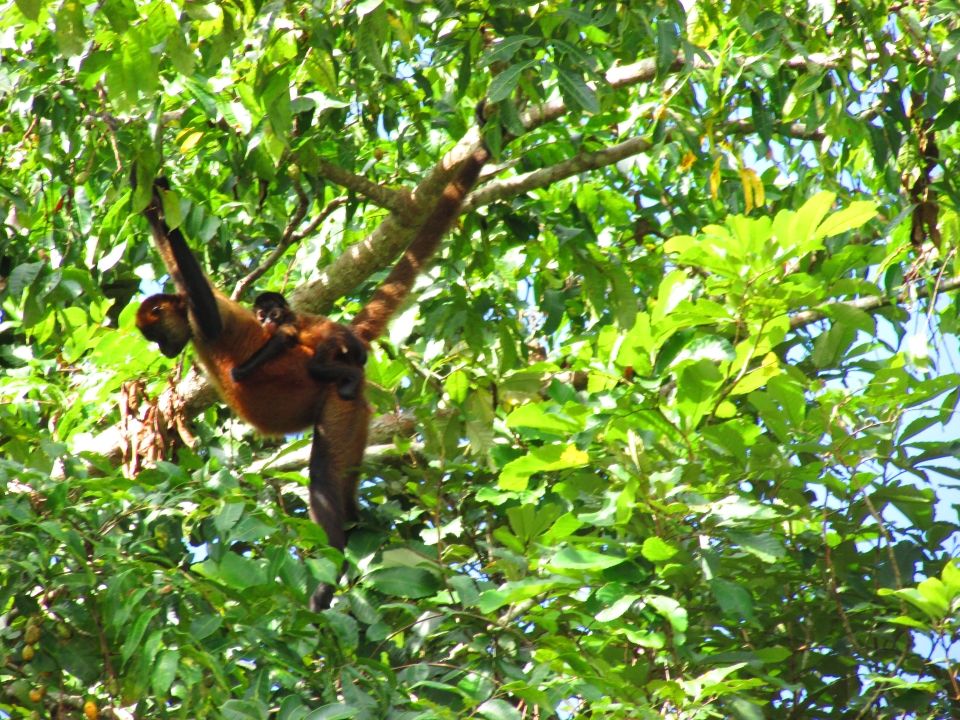
Bullet ants give us cause for pause...

...and lianas caused awe.
The Indio Maíz is home to tremendous biodiversity and supports populations of indigenous people as well. Unfortunately, the commendable efforts of the Nicaraguan government to protect this treasure could be seriously compromised if a plan to build a transnational canal through the region goes through. The stakes are high, and conservationists around the world are watching with bated breath. See:
http://www.nature.com/news/conservation-nicaragua-canal-could-wreak-environmental-ruin-1.14721
Meanwhile, direct payments for forest protection are helping to protect the buffer zone of the Indio Maíz Reserve. Efraín is a local farmer living in the buffer zone who collects payments in exchange for not converting his forests into cattle pastures.
A hidden gem on Efraín's property: a waterfall tucked deep in a forest canyon.
Looking up from the canyon revealed another priceless wonder: a massive raptor and vulture migration.
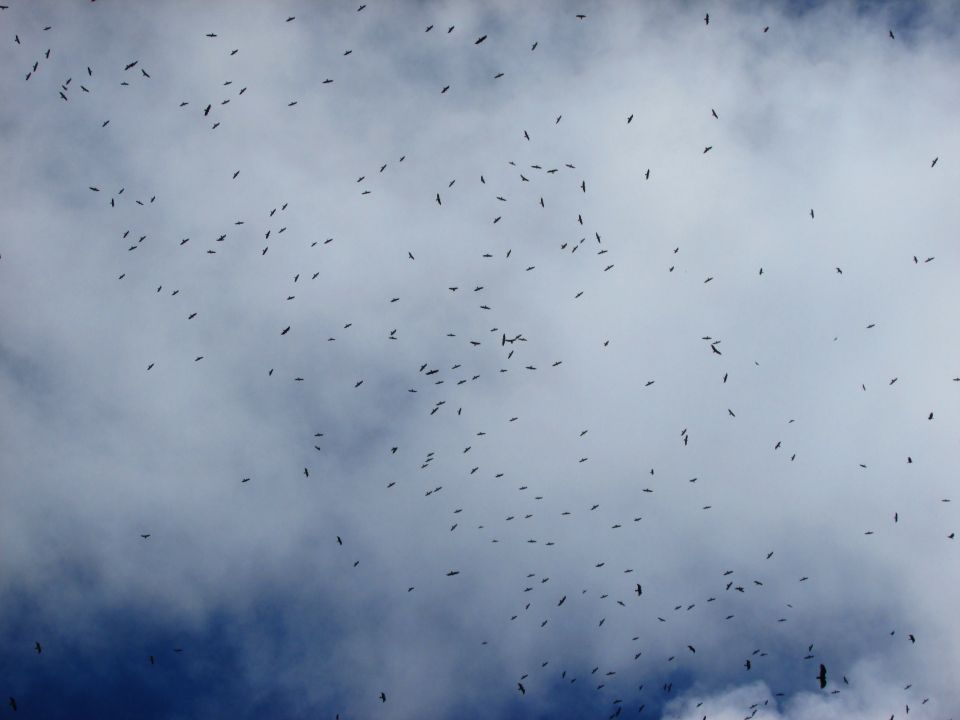
Although traveling by river and land might fool you, the Sarapiquí region of Costa Rica is really close to El Castillo, and wildlife dispersal and migrations are oblivious to geopolitical boundaries. So it made a lot of sense to head to Puerto Viejo de Sarapiquí to learn about forest protection. We focused on incentives for private conservation, and we visited don Zorro, who just like Efraín, is paid to not cut his forests. But, while don Zorro is paid by his government, Efrain is paid by a foreign NGO. Don Zorro also manages his forests with Forest Stewardship Council certification for implementing reduced impact logging practices.
(See full image: http://www.esa.int/var/esa/storage/images/esa_multimedia/images/2007/01/the_mesoamerican_biological_corridor/9740272-3-eng-GB/The_Mesoamerican_biological_corridor.jpg)
We continued to study forests in southern Costa Rica, in the foothills of yet another immense protected area, Parque Internacional Amistad, this time in the BriBri indigenous community of Yorkin.

Maxwell and Emily, in canoe on the Yorkin River, which separates Panama and Costa Rica:
Maxwell clarifies which side is Costa Rica and which is Panama. (Wait a minute -- is he an undocumented alien?)
We spent four days learning about the agro- and wild biodiversity supported by cacao agro-forests and remnant forest patches in the buffer zone of the indigenous reserve, in the foothills of the Parque Internacional La Amistad.
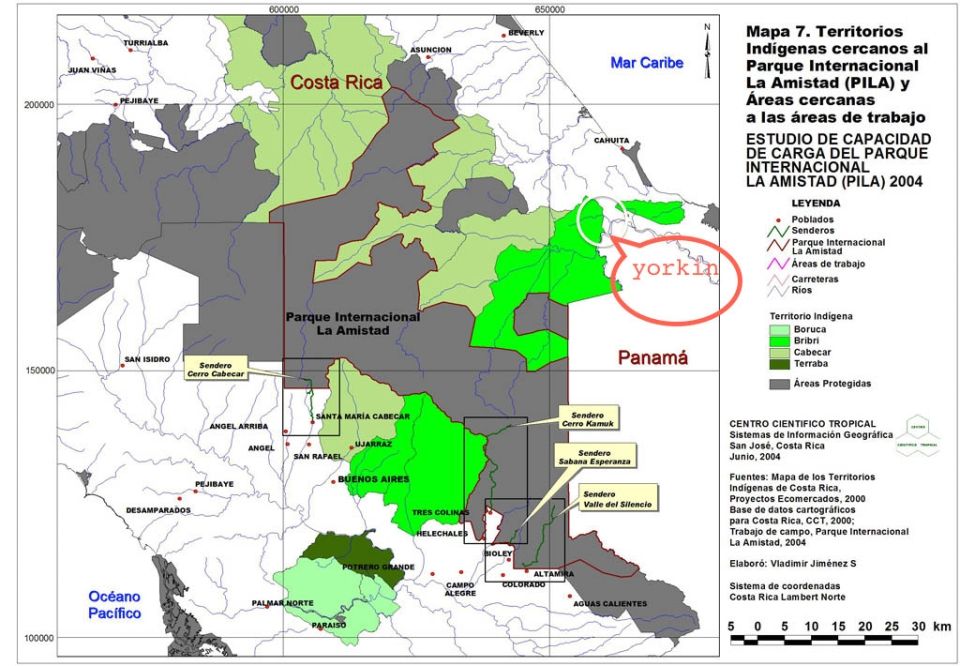
We compared the diversity of plant growth forms as well as butterflies in a cacao agro-forest and a remnant forest patch. Rachel, Benjamin, and Emily are stellar with the tape measure.
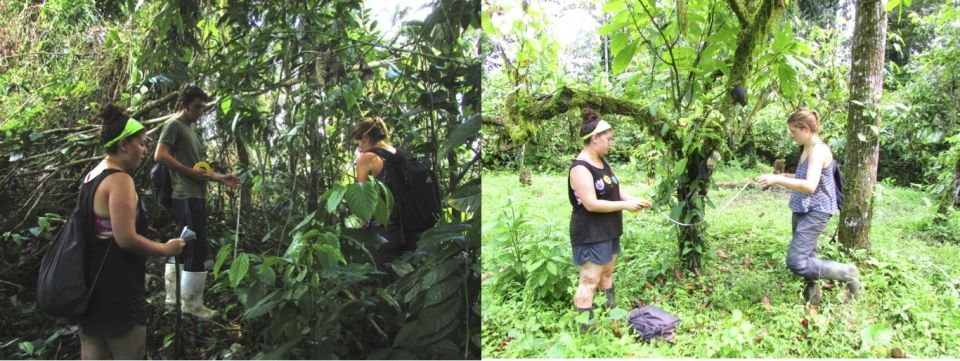
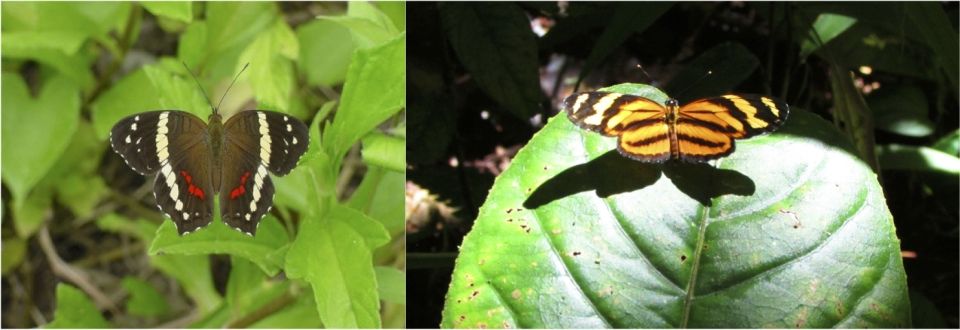
FOOD
To investigate food production and issues surrounding food sovereignty, we visited everything from smallholder farms to large-scale plantations, and we heard from migrant farm workers, indigenous agroforesters and public relations professionals in corporate agriculture. Although we set out to see bananas, pineapple, and cacao, we also got an eyeful of lots of crops and livestock. Here's a small sample:
Raicilla (Pyschotria ipecacuanha) is a source of syrup of ipecac, used as an emetic for medicinal purposes. This species grows in the dark understory of intact rainforests around El Castillo, making it a good candidate for a cash crop in a rustic agroforestry system. However, the high price that it fetches on the market makes it risky for growers, who have to protect their crops from robbers.
Other crops that can be grown in agroforestry systems include cacao (Theobroma cacao), which has nutritional as well as cultural significance for the BriBri people. Eliodoro toured us around an organic cacao agroforestry system when we visited the Stibrawpa association in the Yorkin community. Here we are: Benjamin, Emily, Eliodoro, Rachel, Abby, and Maxwell.
A wide variety of bananas and plantains are intermixed with the cacao, including the coveted gran michel, which Maxwell approves of.
Those bananas come in handy later in the day when Eliodoro taught us how to turn cacao into chocolate and bananas into vehicles for the chocolate!

The BriBri of Yorkin cultivate perhaps 1/2 of the food that they consume, but we visited and saw a lot of subsistence farms around El Castillo, for instance the farms of don Raúl and also his mother. Like most other El Castillo residents, they grow nearly all of their food and purchase very few other items, for instance, rice, salt, and oil. At their farms we saw yucca, bananas and plaintains, many root crops, and a host of furry and feathery future food (pigs, cows, chickens, duck, etc.).
Don Raul's farm and his cow, too:
Chickens, in a tree...
Malanga lessons (not a dance but a root vegetable):
Happy pigs and chickens abound in the countryside around El Castillo:

But the duck is ornery, as ducks usually are.
A little of this and that for Benjamin to contemplate: pineapple, yucca, plantains. etc.

Pineapples (and the like) don't grow in little polycultures very often anymore, and so it was important to visit a large scale plantation at least once. We went to Finca Corsicana, which boasts that it is the single largest organic pineapple plantation in the universe. Corsicana certainly is large, no doubt about that, and pineapple is BIG BUSINESS for Costa Rica. The land area now in pineapple plantations around Costa Rica is about double that of the land set aside for biodiversity conservation in the Children's Eternal Rainforest. Munch on that for awhile.
Anyway, it was good to hear about the virtues of corporate organic production, especially since Corsicana may be as good as it gets. We learned a lot from Michael, an excellent company rep, who toured us around the plantation and the Community Learning Center.
Related Posts
Costa Rica vs. Argentina: Which is Better for Study Abroad?
Imagine yourself sipping mate in a bustling Buenos Aires café or lounging peacefully in a hammock overlooking Costa Rica's lush rainforests. These contrasting scenes represent just a glimpse of the... keep reading
Happy Earth Day: Today and Every Day
Happy Earth Day! Every April 22, this global event comes around to remind us how precious our planet is, what sustainable efforts we can make to protect Earth, and that... keep reading
Top 10 Study Abroad Volunteer Opportunities with CIEE
Have you ever wondered if you could volunteer abroad? Perhaps you're looking into study abroad programs that provide international volunteer opportunities. If you’re itching to study abroad and truly make... keep reading
